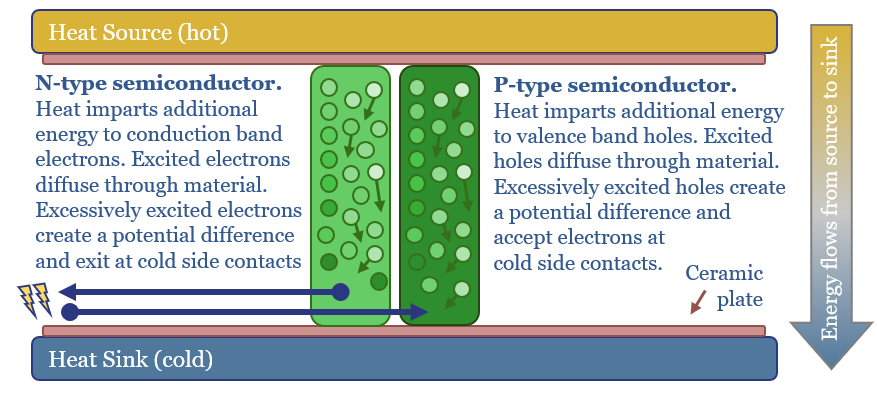Solar semiconductors have changed the world, converting light into clean electricity. Hence can thermoelectric semiconductors follow the same path, converting heat into electricity with no moving parts? This 14-page report reviews the opportunity for thermoelectric generation in the energy transition, challenges, efficiency, costs and companies.
Semiconductors have already changed the entire global energy industry by converting light into clean electricity (i.e., photovoltaic solar) and efficiently converting electricity back into light (i.e., LEDs).
But semiconductors can also convert temperature differences into electricity (the Seebeck Effect) and convert electricity into temperature differences, or in other words, very localized cooling (the Peltier Effect).
Perspectives on the rise of semiconductors, and the potential for thermoelectric generation to follow the path of PV solar generation, are discussed on pages 2-4.
The opportunity is vast. In our breakdown of global energy, 60% of primary energy is effectively wasted as heat. We discuss where thermoelectrics could unlock the largest opportunities on pages 5-6.
Thermoelectric devices are already commercial today, in a c$500M pa niche, ranging from NASA space probes, to remote power generation, to stove fans (available to purchase on Amazon for $20-60 apiece). Today’s commercial applications of thermoelectric generators and cooling devices are discussed on pages 7-8.
The efficiency of thermoelectric generation hinges on its Figure of Merit, aka ZT score, which we have modeled from first principles, and explained on pages 9-10.
Improved thermoelectric materials are needed for this market to accelerate. Today’s devices are 2-10% efficient, whereas photovoltaic solar really took off once it had become 15-20% efficient. Avenues to improve thermoelectric figures of merit are discussed on pages 11-12.
Our company screen covers twenty leading companies in thermoelectrics, from incumbent semiconductor manufacturing companies, to remote power generation specialists, to companies developing more novel technologies, as summarized on page 13.
What conclusions for decision-makers in the energy transition? For example, what would happen to fuel cells in a world that unlocked 40-50% efficient thermoelectric generators, with no moving parts and no decline rates? Closing observations are on page 14.

